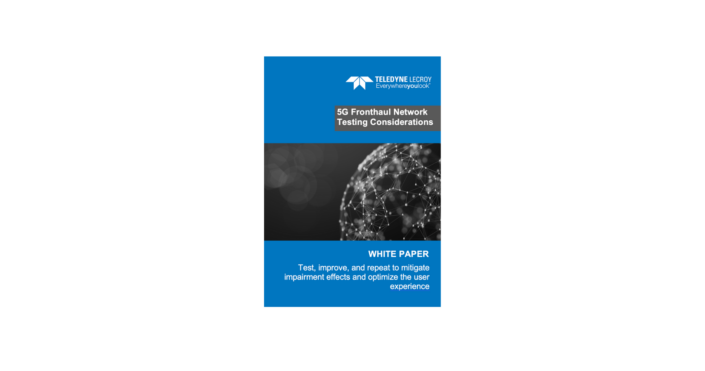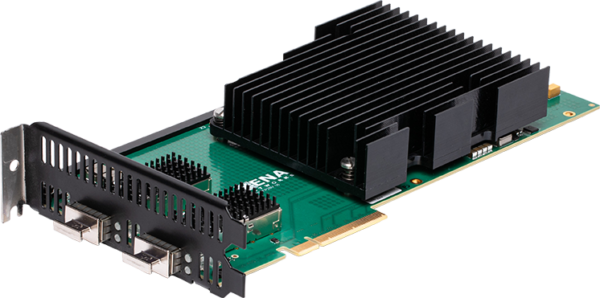
Award Winning Solutions
Xena has won multiple global awards for price/performance and technical innovation. Learn more.

Technical Expertise
Copyright © 2009-2024 Teledyne LeCroy Xena ApS, Denmark
Parallel Wireless offers mobile operators the only unified all G (5G/4G/3G/2G) software-enabled native OpenRAN (ORAN) solution. The company is engaged with 50+ leading operators worldwide and has been named as a best performing vendor by Telefonica and Vodafone. Parallel Wireless’s innovation and excellence in multi-technology, open virtualized RAN solutions have been recognized with 65+ industry awards.
Parallel Wireless´s technology is designed for open interoperability through the GPP-based baseband processing platform, radio hardware, software and simplified business model to support all current and future Gs for a better, unified service to the end users, with much lower TCO for mobile operators.
By disaggregating hardware and software, the Parallel Wireless’s software platform helps mobile operators expand and modernize their legacy networks to support subscribers across all G technologies. Parallel Wireless industry- leading Open vRAN solution consists of COTS vBBU, OpenRAN-based RRU, and OpenRAN Controller and a network software suite.
In traditional deployment of Radio Access Networks (RANs) the Base Band Unit (BBU) is co-located with the Remote Radio Unit (RRU). Due to the short distance between the RRU and BBU, latency is generally not an issue.
In 5G ORAN architecture the BBU is split into a Distribution Unit (DU) handling real time L1 and L2 communication with the Radio Unit (RU) and a Central Unit (CU) handling the higher layer communication with the backhaul network. For cost and flexibility reasons one CU can serve several DUs and one DU may serve several RUs. This also means that the RUs, DUs and CUs can be located tens of kilometers apart and therefore, latency can become a challenge.
As a supplier of unified ORAN systems Parallel Wireless naturally wanted to test the latency performance of different configurations of hardware, software, and fiber lengths between the units. “Transport infrastructure and long fibers are essential part of our centralized deployment strategy, so it required big investment and research from Parallel Wireless to identify what will be a proper representation of live deployment.” says Sergey Antoniuk, team leader of the Nano Cell systems engineering team at Parallel Wireless. “Finally, we decided to purchase a 20 km long optical fiber cable, and used it in our lab,” he adds.
“The long fiber worked well to validate the performance at 20 km length but, it did not allow us to challenge the system and we realized we were missing a lot of data,” Sergey explains.
“For instance,” he adds, “we wanted to know how far we can go between the RRU and BBU for any standard configuration.
Another topic was to investigate how much the distance can be increased by tweaking the configurations.”
A seemingly obvious way to obtain performance data at more fiber lengths would be to purchase multiple fiber cables with different lengths. However, this solution is too expensive and time consuming since a lot of cables are needed and they must be connected and disconnected manually for each test case. The link is broken each time the cable is disconnected which does not simulate real life situations and, since the cable is fragile, there is a risk of damaging it each time it is handled. Finally, with a fiber cable there is no option to affect only part of the traffic which means that the entire traffic on a specific fiber cable is impacted by the fiber length.
Parallel Wireless decided they needed a latency emulator and engaged with Xena Networks to use the Xena Chimera Network Emulator in their laboratory.
Chimera can emulate a broad range of network impairments like latency, jitter, packet & port impairments, flexible distributions and BW shaping. All impairments are supported at five Ethernet speeds: 100GE, 50GE, 40GE, 25GE and 10GE. This unique flexibility is provided via two physical transceiver cages, both supporting QSFP28 and QSFP+ transceivers. The result is a versatile solution that provides consistent, accurate, well-defined, and repeatable impairments to traffic between network equipment in the lab.
Chimera is ideal for impairment testing of ORAN network infrastructure with Ethernet ports capable of supporting up to 100GE. Chimera is easily controlled using the GUI-based XenaManager software.
Chimera was installed in Parallel Wireless’s laboratory between a 4G RRU and BBU device and acted as an emulated network as shown on the figure above. Typically, there are several radio units at each location and only a single fiber connecting these to the BBU location. Therefore, the traffic flows from the different RUs are aggregated using a switch at the RRU end and disaggregated at the BBU side. Cell bandwidth is 10 MHz. The traffic was generated with Iperf and each configuration was tested for 60s.
“Installing and configuring Chimera was very fast”, says Sergey Antoniuk and explains, “About two weeks after we got the Xena Chimera, we could collect data within 2 – 3 days of work that we could not achieve by any other means with similar small amount of effort.”
Parallel Wireless used Chimera to gradually increase the latency for each type of system configuration until the service broke. This fine granularity in latency testing would simply not have been possible in any other way. Since no cables had to be re-connected during testing, the tests could be done very fast and with-out breaking the link each time, the latency was changed. Another benefit of using Chimera as a network emulator is that the tests could be performed remotely.
The outcome of the work was a two-dimensional matrix mapping out performance versus latency as well as the maximum possible latency for each configuration. Besides the performance mapping, Chimera also enabled Parallel wireless to investigate how the system responds to dramatic changes in latency. This can easily happen in a real network in case of sudden (partial) fiber damage due to for instance earthquakes or construction activity near the cable.
The extensive network impairment testing made possible with Chimera has enabled Parallel Wireless to develop more accurate product specifications and thereby offer solutions superior to their competition. Furthermore, with the impairment data collected, Parallel Wireless can now offer their customers improved pre-deployment support by guiding them to the exact configurations that will work for a given network scenario through data-driven decisions.
In OpenRAN networks, the RRUs and BBUs can be located tens of kilometers apart making latency a challenge. Parallel Wireless offers mobile operators a unified all G (5G/4G/3G/2G) native OpenRAN (ORAN) solution. They needed to map out the maximum latency possible for their various system configurations to guide their customers optimally. They also wanted to investigate how much the maximum latency could be increased by tweaking the system configurations.
Xena’s Chimera Network Emulator was used to emulate fiber links with varying lengths between an RRU and a BBU. After only a few days, Parallel Wireless was able to collect all the latency data they needed using Chimera as network emulator. This could not have been achieved by any other means with such a minimum amount of effort.
The data obtained with Chimera enabled Parallel Wireless to refine product specifications and offer their customers superior guidance in their system planning phase.
Going forward, they foresee that Chimera will be used for both R&D testing during development as well as regression testing of new releases of their products. The automation offered by Xena’s scripting tools will likely be used to integrate a few typical and corner cases for latency in their production testing. Furthermore, they expect to extend the testing to introduce latency on specific data streams so only part of the data will be affected by the latency which allows to test latency effect on different services.



